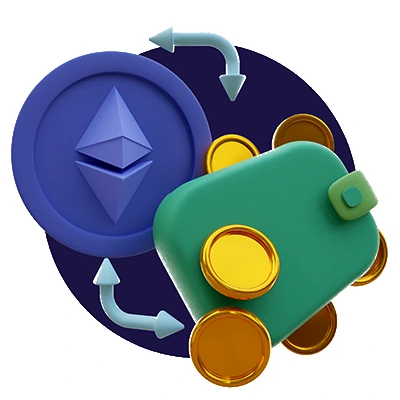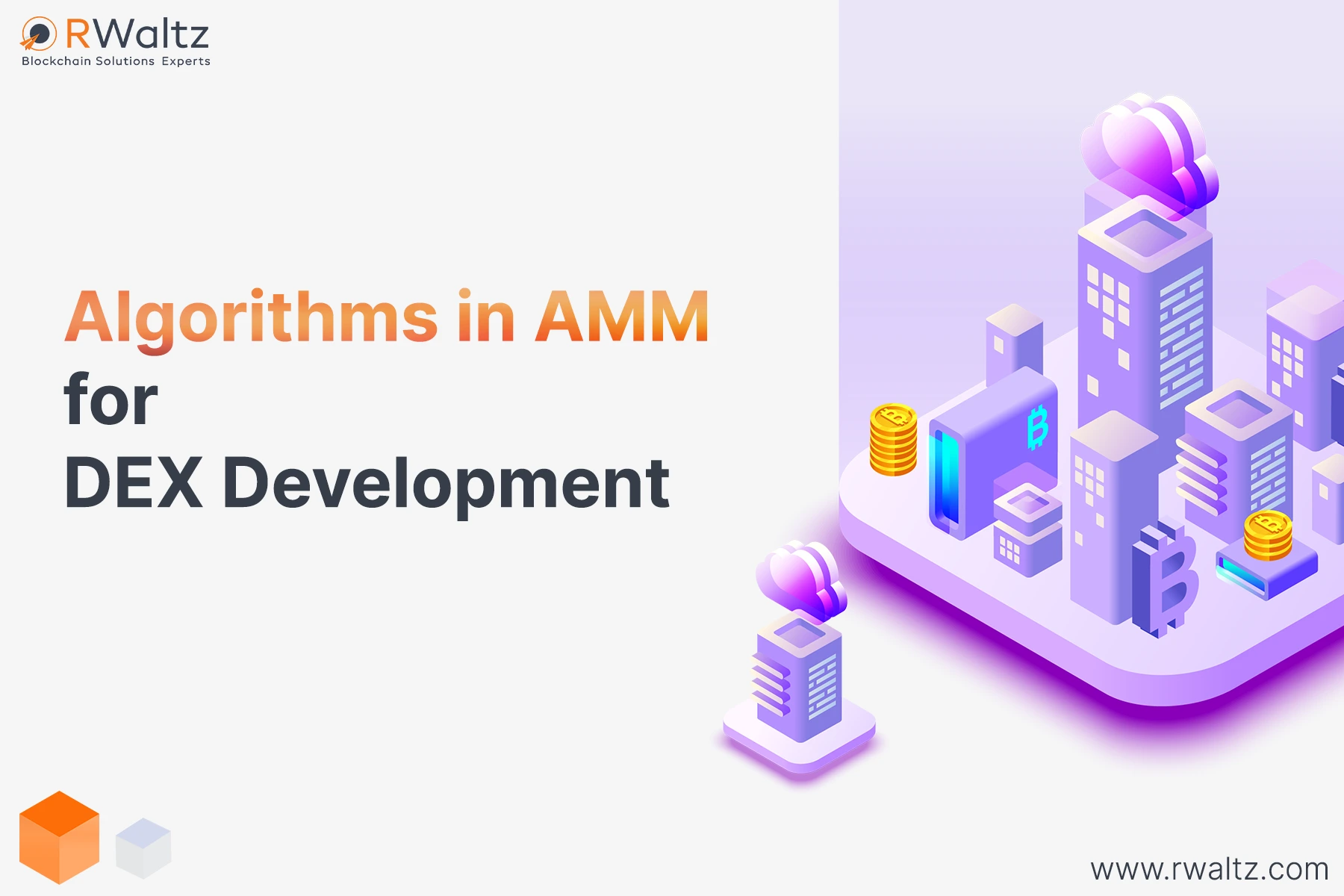Search Questions

What are Liquidity Pools?
Liquidity pools are defined as crowdsourced pools, where cryptocurrencies or tokens are locked in a smart contract facilitating trades between the assets on a Decentralized Exchange (DEX). Most of the Defi platforms use automated market makers rather than traditional markets enabling automated trading of digital assets through the liquidity pools. The Liquidity Pools depict a mechanism enabling users to pool their assets in a DEX’s smart contracts that offers asset liquidity to the traders for currency swap. Addressing the challenge of limited liquidity supply, automated market makers offered incentives to supply these pools with the assets without the intermediary. The trading turns easier on Decentralized Exchanges with increasing assets added to the pool and the rising liquidity of the pool.

What is Crypto Exchange?
The proliferation of crypto assets generated widespread interest and lead to a debate over the future of Cryptocurrency for this emerging digital economy. Cryptocurrency Development is revolutionizing the financial ecosystem by offering an array of potential benefits to the users. Crypto Exchanges have revolutionized traditional crypto trading and made it much easier for crypto enthusiasts to acquire these digital currencies. What is a Crypto Exchange? Crypto Exchange is defined as an online trading platform to buy, sell, and exchange cryptocurrencies. This platform enables the users to trade one crypto for another i.e. convert Bitcoin to Litecoin. It also enables people to buy cryptocurrencies with fiat currency.What is White Label Crypto Exchange? A white label cryptocurrency exchange is a ready-to-deploy protocol with a market-ready backend and a customizable front-end. The white label cryptocurrency exchange development facilitates customizing UI/UX based on the business requirements enabling the application to be launched quickly in the market.Types of Crypto ExchangesCentralized Crypto Exchange (CEX) Centralized Crypto Exchanges have intermediaries that function as banks for crypto trading. The centralized exchange depicts a traditional cryptocurrency exchange in the crypto sphere. These exchanges are governed by a central authority offering both crypto-to-crypto and fiat-to-crypto trading. These platforms often function as reliable intermediaries for trades and act as custodians by managing and securing the funds. Generally, CEX platforms verify identity and ask for Know Your Customer(KYC)details, Anti-Money Laundering (AML), and Counter-Terrorism Financing (CFT) checks before the user begins trading. Decentralized Exchange (DEX)Decentralized exchange refers to an alternative to a centralized exchange. Decentralized Cryptocurrency Exchange is a platform where there is no central point of failure i.e. it facilitates crypto trading without the involvement of a third party thus eliminating the commission fees. The platform automates transactions and trades through smart contracts and decentralized applications.Peer-to-Peer Exchange (P2P)Peer-to-peer (P2P) Exchange is a platform that allows people to trade directly with one another eliminating the need for a centralized party to facilitate transactions. P2P does not demand any KYC details before initiating the trade. Peer-to-peer exchange is based on the concept of decentralized exchange enabling direct trading without the involvement of a third party or central authority. The major difference between DEX and P2P is the escrow, which plays a vital role and the escrow wallet is controlled by the admin.Wrap UpHopefully, the article has enlightened your knowledge of Crypto Exchanges. For more queries, connect with our team. If you are looking for cryptocurrency exchange development RWaltz is the right choice for you! Hurry up! Schedule a meeting right away!

Liquidity Pools- The Building Blocks of Decentralized Exchange Development
What is a Liquidity Pool? Liquidity pools are defined as crowdsourced pools, where cryptocurrencies or tokens are locked in a smart contract facilitating trades between the assets on a Decentralized Exchange (DEX). Most of the Defi platforms use automated market makers rather than traditional markets enabling automated trading of digital assets through the liquidity pools. The Liquidity Pools depict a mechanism enabling users to pool their assets in a DEX’s smart contracts that offers asset liquidity to the traders for currency swap. Addressing the challenge of limited liquidity supply, automated market makers offered incentives to supply these pools with the assets without the intermediary. The trading turns easier on Decentralized Exchanges with increasing assets added to the pool and the rising liquidity of the pool.What is an Automated Market Maker?Automated Market Makers (AMMs) refer to a part of decentralized exchanges (DEXs) that eliminate the need for a middleman while crypto trading. These are autonomous protocols on the DEX platforms that automate liquidity. These AMM protocols use smart contracts (self-executing computer programs) to determine the price of digital assets and provide liquidity. The users don’t trade against the counterparties but they trade against the liquidity locked into smart contracts. What are Arbitrage Traders?Arbitrage Traders exploit the tiny differences in price between identical assets in multiple markets. The arbitrage trader is defined as a trader who buys an asset in one market and sells it in another market at the same time to analyze the difference and efficiency between the markets. In standard terms arbitrage is defined as buying and selling of shares or digital assets in multiple markets to receive profit from inevitable differences in the prices at the same time. Arbitrage traders are popular for enhancing the efficiency of the financial markets, by bidding for the lower-priced assets and selling off the higher-priced assets. What is the Purpose of a Liquidity Pool? During a trade, investors or traders encounter a difference between the executed and expected price, which might lead to illiquid markets. The liquidity pool eliminates the concerns of illiquid markets offering incentives to the users and giving liquidity for a share of trading fees. Trading through Uniswap liquidity protocols eliminates buyer and seller matching. In other words, traders can exchange their tokens and assets through liquidity provided by users and transact through smart contracts. What are Liquidity Pool Tokens? Liquidity Pool Tokens also known as Liquidity provider tokens are given to users who provide liquidity in the pools. Once you deposit a pair of tokens in the pool, you’ll receive LP tokens as a “receipt”. These tokens perform as a receipt that allows users to claim the original stake and interest earned. What is a Price Impact? Price Impact refers to the difference between the current market price and the price you will pay during a swap on a decentralized exchange. The price impact occurs due to the pricing of the DEX platforms. The change in the ratio of assets in the pool leads to one asset turning expensive and the other one becoming inexpensive. When the supply of one asset increases the supply of the other one decreases making the decreasing asset more expensive. The more the shift in ratio, the more the price changes. What is Slippage Tolerance? When a trader tries to execute an order on the market at one price but in the end pays more than expected or even less due to the recently executed trades is slippage. Slippage Tolerance is defined as the adjustment of the price “movement” limit by the number of digital assets a user is willing to bear. This number is presented in the form of a percentage of the total exchange value. In simple words, it is the difference between the token price we can tolerate that occurs while we carry out the operation. If the token is more or less then the price, the operation is halted. What is a liquidity provider? A liquidity provider refers to a market broker or institution that acts as a market maker in a chosen asset class. The liquidity provider offers crypto assets to a platform helping them with decentralized trading. These market makers in return are rewarded with fees generated by trades on that platform which might be thought of as passive income. The assets provided by the user are locked for the time frame user has chosen to provide liquidity. Which are the popular Liquidity Pool Providers? Decentralized exchanges use Automated Market Markers to leverage liquidity pools for enabling permissionless and automated trading of digital assets. Here’s a list of popular platforms offering liquidity pools. Uniswap Uniswap is considered to be one of the crucial entries in the liquidity pools based on its trading volume. The platform enables decentralization of trade between ETH and ERC-20 tokens. Uniswap offers a competitive advantage as it operates as an open-source exchange and assists any individual to launch a liquidity pool for any token without any fees. Balancer The balancer is an Ethereum-based liquidity pool that serves as a non-custodial portfolio manager and price sensor. It offers the users the flexibility to customize pools along with the trading fees earned by subtracting or adding liquidity. The platform offers multiple pooling choices that include private, smart, or shared pools. In March 2020, Balancer introduced a liquidity mining facility by distributing BAL governance tokens to the liquidity providers. Curve Finance Curve Finance is a decentralized liquidity pool that serves favorable opportunities for stablecoin trading. The platform offers 7 different pool pairs with distinct ERC-20 pool pairs. Thus, it supports swapping for various pools of crypto assets and stablecoins, which comprise BTC, PAX, BUSD, and many more. Wrap Up Hopefully, the article has enlightened you on liquidity pools. For further queries connect to our experts. If you are looking for a Blockchain and Cryptocurrency Development Company, you are at the right place.

What is Blockchain Interoperability in Transactions across Crypto Exchanges?
Blockchain interoperability - it's the tech superpower bringing different crypto crowds closer.See, blockchain networks are like islands scattered across the crypto seas at first. Bitcoin over here. Ethereum land way over there. And that tiny Polkadot island starting to rise. Each has its own language and ways of doing things. Trying to get them to work together can feel like chaos.But bridges are starting to connect these lands. With interoperability, assets and data can move freely between blockchain islands to where they’re most needed.No more hassles of visa applications or changing currencies at the border! Just direct flights of value across networks.Why Do We Need This Connectedness?Well, no blockchain has superpowers to rule everything alone right now. Teaming up makes them stronger, without risking their unique cultures.It also saves crypto citizens from the headache of constantly swapping passports to access different islands. As a trader trying to sail between exchanges on different blockchains, I'd keep hitting roadblocks.Need to transfer Bitcoin from Kraken to my FTX wallet? Sorry, they don't speak the same language, so I'd have to bridge manually. The fees, delays and complexity made me tear my hair out!With interoperability, I can directly trade my Bitcoin for an Ethereum token on Uniswap to catch a red hot opportunity. No detours, no wasted time. Just fluid movement between decentralized finance (DeFi) ecosystems.How Do We Connect These Crypto Islands?We need to build bridges that allow secure passage but aren't too disruptive for existing networks.One approach is wrapping tokens in a passport of sorts to comply with the target network. For example, wrapped Bitcoin (wBTC) lets me use Bitcoin seamlessly on Ethereum's roads.Another tactic is making handshakes or short term agreements between networks to safely transfer value. Like a ferry service between two islands!There are also still-experimental tunnel protocols aiming to enable two-way, continuous transfers. And of course, alliance platforms like Polkadot specifically designed to unify different chains.But What's In It For Island Networks?It might seem counterintuitive for sovereign blockchains to share power. But here’s how it helps them: More versatile economic activity for users Increased adoption for smaller networks by connecting with major chains Ability to specialize while relying on allies for other needs Higher overall liquidity, security and efficiencyThere's some work still needed in protocol upgrades, testing, and getting networks onboard. But the global policy seems clear - increased connectivity between crypto networks benefits users and projects alike!The future looks bright, as long as security and common interest unite these decentralized islands. United we stand, divided we fall!If you are looking for any kind of Crypto Exchange Development, DEX, CEX, or clone of popular exchanges then you are the right platform. Book your free consultation today.

Algorithms in AMM for DEX Development
Decentralized exchanges (DEXs) have become an integral part of the cryptocurrency ecosystem, providing a means of trustless trading without centralized intermediaries. A core component enabling decentralized trading on DEXs is the automated market maker (AMM). AMM algorithms help provide continuous liquidity and price discovery on DEX platforms.In this article, we'll explore key AMM algorithms and how they facilitate decentralized cryptocurrency trading.What is an Automated Market Maker?An automated market maker (AMM) system provides liquidity to a decentralized exchange using a mathematical formula. Unlike traditional order book exchanges, AMMs don't require buyers and sellers to place orders. Instead, liquidity pools are created programmatically.The AMM uses an algorithm to determine asset prices based on the liquidity pool's supply and demand for tokens. This algorithm replaces the order-matching function performed by centralized exchanges.Key Benefits of AMMs: Always provide liquidity, even for low-volume assets No order matching needed Fairer prices determined algorithmically Increased decentralization through trustless tradingPopular AMM AlgorithmsThere are several AMM algorithms, each with its own unique mechanisms for facilitating trading. Let's explore some of the most widely used.Constant Product Market MakerThe constant product market maker (CPMM) is the most common AMM algorithm, used by leading DEXs like Uniswap. It works by maintaining a constant product between the quantities of token pairs in a liquidity pool:x * y = kWhere x and y represent the quantities of tokens X and Y in the pool, and k is a constant.Whenever a trade occurs, the product is maintained by adding or removing liquidity from the pool. This adjusts the relative token prices automatically based on supply and demand.CPMM Benefits: Simple and efficient algorithm Fair token prices based on ratios No external data needed to set pricesCPMM Drawbacks: Prices can fluctuate with large trades Impermanent loss for liquidity providers Overall, CPMM offers a straightforward way to facilitate AMM trading, making it a popular choice despite some drawbacks. Invariant Market MakerThe invariant market maker (IMM) aims to improve on CPMM by using a different formula to determine prices:x * y = k / (x + y)Rather than a simple product, it divides the product by the sum of x and y token amounts. This helps mitigate some issues like price volatility and impermanent loss.IMM Benefits: More stable prices Lower impermanent loss Resilient against manipulationIMM Drawbacks: Added complexity Reduced liquidity for large trades For developers looking for an AMM with stronger guarantees, IMM offers a more robust algorithm than CPMM. Kyber Network's Constant Function Market MakerKyber Network proposes an alternative AMM model called the Constant Function Market Maker (CFMM). It determines prices using the following formula:x * y = k * f(x, y)The function f(x, y) incorporates additional factors beyond just the ratio between token amounts x and y. It takes into account the trading volume and ratios between reserves to improve the market making algorithm.CFMM Benefits: More efficient prices Considers multiple liquidity sources Dynamic based on real-time dataCFMM Drawbacks: Requires oracles for price data Higher gas fees due to complexity For developers wanting a data-aware solution, CFMM leverages external information to optimize the AMM algorithm. Uniswap V3's Flexible AMMUniswap V3 introduces a flexible AMM model (FMM) with customizable liquidity ranges. Liquidity providers can set price ranges for adding funds to a pool. This allows concentrating liquidity at desired prices.The FMM formula uses the midpoint price x to determine the pool price y:y = x + s * (x - x)Where s is a parameter between 0 and 1 for the price range. This formula enables adjustable liquidity allocation.FMM Benefits: Customizable liquidity ranges Improved capital efficiency Higher yield potentialFMM Drawbacks: Added complexity for LPs Fragmented liquidity For developers wanting more configurability for liquidity provisioning, FMM adds advanced parameters.Evaluating AMM SolutionsWhen evaluating AMM solutions, here are some key considerations: Required capital efficiency Ability to handle trading volumes Price stability needs Integration complexity Customizability needsDevelopers should assess their specific exchange requirements to determine the optimal algorithm. A combination of multiple AMMs can also be leveraged.Building a Custom AMMFor teams wanting maximum control and customization, building a proprietary AMM algorithm is an option. This allows creating an AMM tailored to your exchange model and tokenomics.Key aspects of a custom AMM include: Formulating pricing equations and ratios Programming liquidity pool interactions Developing oracles for external data Programming incentive mechanisms Configuring exchange parameters and interfacesWhile complex, a custom AMM unlocks capabilities aligned with your DEX's needs.ConclusionAMM algorithms are critical for enabling decentralized trading on cryptocurrency exchanges. Teams have a variety of options to evaluate from established CPMM and IMM models to more advanced CFMM and FMM algorithms.For people looking to develop out a new decentralized exchange protocol, AMM technology is a crucial component. Assessing your requirements and exploring different AMM solutions will allow creating an automated market maker optimized for your platform's needs. Reach out if you need any guidance building a custom algorithm or implementing an AMM for your DEX architecture.
Recent Knowledge Base
Let's Build Your Vision Together
Get Started with RWaltz Today!




